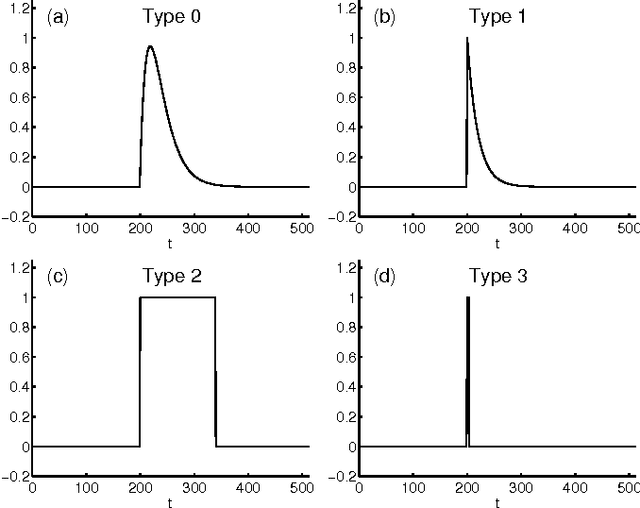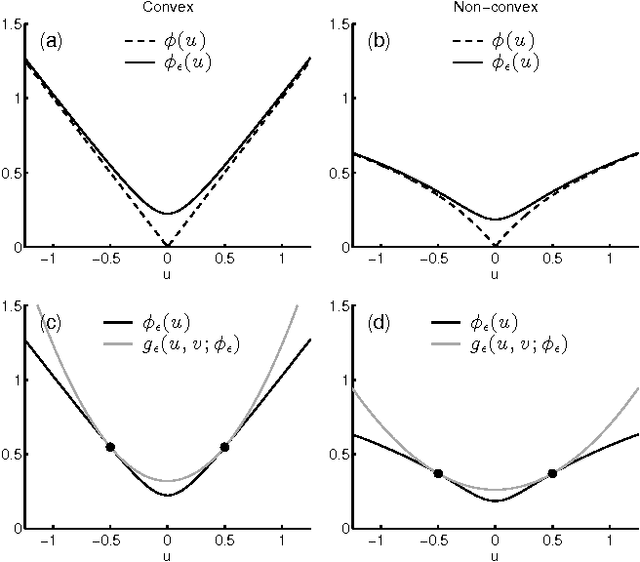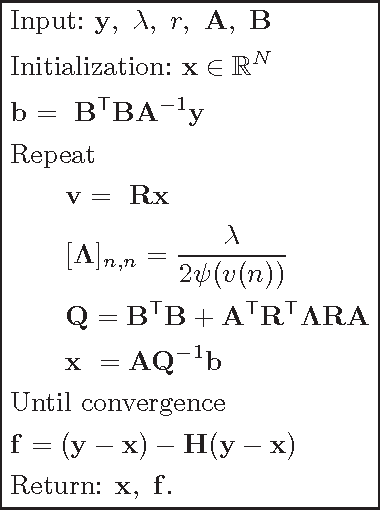Sparsity-based Correction of Exponential Artifacts
Paper and Code
Sep 24, 2015



This paper describes an exponential transient excision algorithm (ETEA). In biomedical time series analysis, e.g., in vivo neural recording and electrocorticography (ECoG), some measurement artifacts take the form of piecewise exponential transients. The proposed method is formulated as an unconstrained convex optimization problem, regularized by smoothed l1-norm penalty function, which can be solved by majorization-minimization (MM) method. With a slight modification of the regularizer, ETEA can also suppress more irregular piecewise smooth artifacts, especially, ocular artifacts (OA) in electroencephalog- raphy (EEG) data. Examples of synthetic signal, EEG data, and ECoG data are presented to illustrate the proposed algorithms.
 Add to Chrome
Add to Chrome Add to Firefox
Add to Firefox Add to Edge
Add to Edge